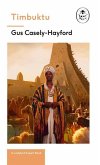This book is a study of architecture and urban design across the Mediterranean Sea from the 12th to the 14th Century, a time when there was no single, hegemonic power dominating the area. The focus of the study--four cities on the Italian peninsula, and four in Syria and Egypt--is the interconnectedness of the design and use of urban structures, streets and open space. Each chapter offers an historical analysis of the buildings and spaces used for trade, education, political display and public action. The work includes historical and social analyses of the mercantile, social, political and educational cultures of the eight cities, highlighting similarities and differences between Christian and Islamic practices. Sixteen new maps drawn specifically for this book are based on the writings of medieval travelers.
Hinweis: Dieser Artikel kann nur an eine deutsche Lieferadresse ausgeliefert werden.
Hinweis: Dieser Artikel kann nur an eine deutsche Lieferadresse ausgeliefert werden.







